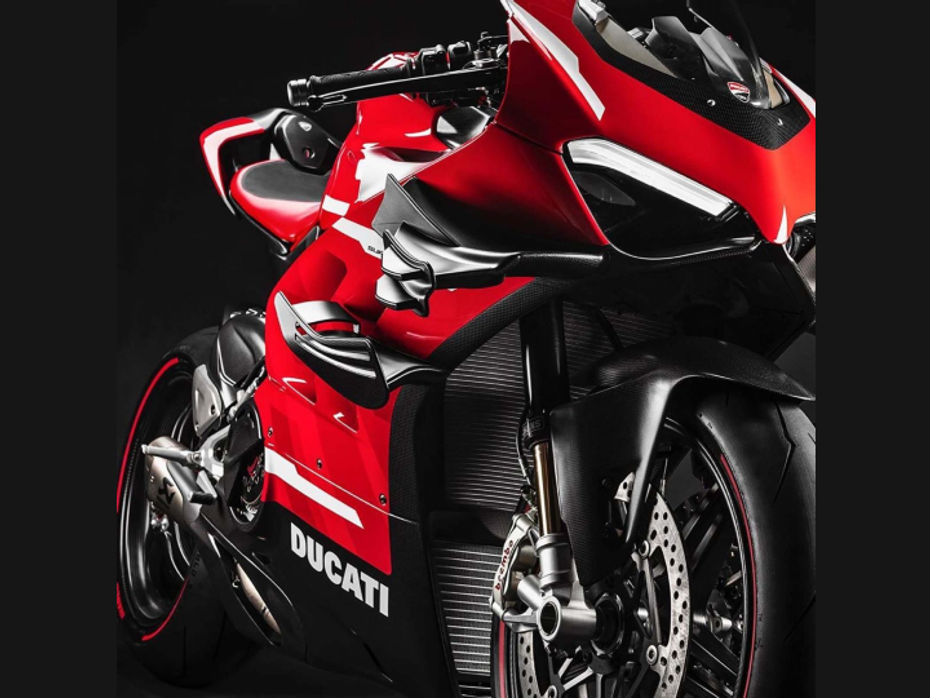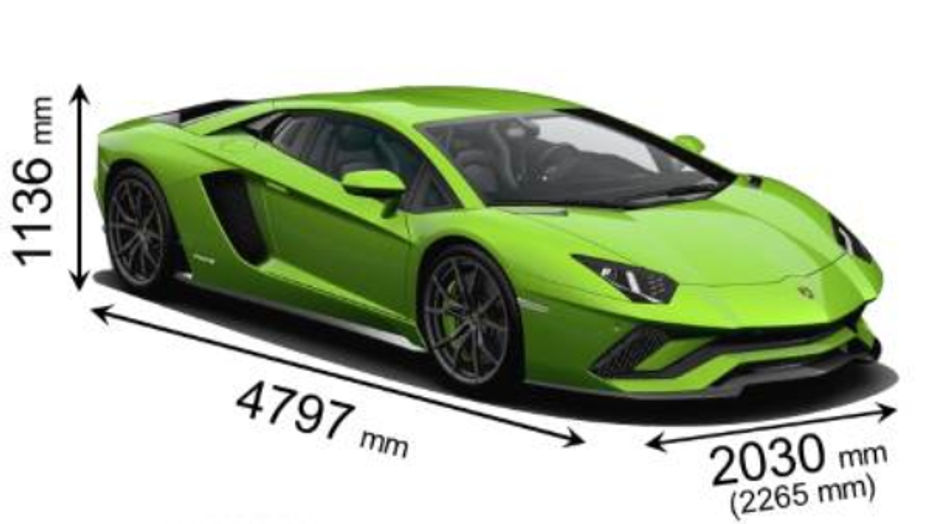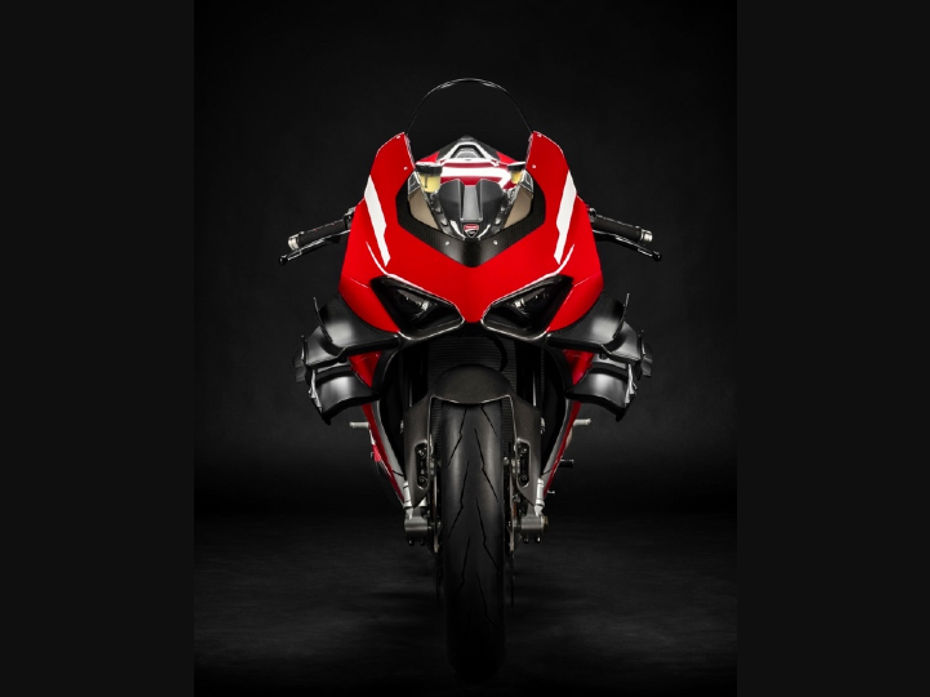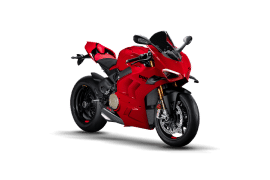
Ducati’s 200PS-plus Panigale V4 Is Now Available In India
- Jun 7, 2021
- Views : 5043


Which comes first when designing a motorcycle, form or function? Going by history, the Italians would most likely answer the former. But Ducati’s latest offering, the Superleggera V4, seems to buck that trend. It’s based on the Panigale V4, which is a breathtakingly beautiful bike, but this being a hardcore high-performance model, function has taken a priority over form, and the sides of the once beautifully sculpted fairing are now covered with enough wings to rival an Airbus. There must be some massive performance benefits in these for Ducati to sacrifice the clean lines on its regular Panigale, so what are they?
Power Struggle
The acceleration that a motorcycle is capable of is determined largely by two factors. The first is grip. Most modern large-capacity bikes have more than enough torque to spin the rear wheel even in higher gears, so the power delivery needs to be managed either manually by the rider or electronically by the motorcycle itself. Once the power has been brought under control to ensure that the grip available from the rear tyre is never exceeded, the next obstacle is wheelies.

The dimensions of a supercar are quite different to those of your everyday Civic. A Lambo sits just inches off the deck and doesn’t extend much higher up than your waist. The Alfa Romeo 8C, despite being only about 4 feet tall, is nearly as wide as a Range Rover. But when it comes to superbikes, they’re more or less similar in size to much smaller capacity everyday motorcycles, because having a very low centre of gravity isn’t necessarily beneficial to a bike’s handling.
The combination of a very high centre of gravity and short wheelbase mean that modern superbikes tend to wheelie quite happily, even in 4th and 5th gear, if allowed to. Without its complex electronic wheelie control system, the Panigale V4 would pretty much be a unicycle. But this system keeps wheelies in check by cutting the torque sent to the rear wheel, which is detrimental to acceleration. So what if there was a way to prevent wheelies without sacrificing acceleration?
Winged Wonder

That’s where winglets come in. On an aircraft, the air rushing over the wings produces an upward force (lift) which… erm, lifts the plane up into the sky. Flip these wings upside down, and they create a downward force, quite simply called downforce. By bolting these upside down wings, or winglets as they’re called in the two-wheeled world, onto the sides of the front fairing, there is a downforce created over the front wheel which helps push it down and prevent wheelies.
Clever as they may be, winglets aren’t an alternative to electronic wheelie control; they only complement the system and mitigate the power cuts to the rear wheel. According to Ducati’s claims, the hideous attachments on the Superleggera V4 actually produce a sizeable 50kg of downforce at 270kmph. That’s even more than its MotoGP machine, whose winglets are regulated by the FIM rulebook.

Of course, nothing in life comes free, so winglets do have some disadvantages as well. The most obvious drawback is drag. All those protrusions trying to cut through the wind mean that winglets produce downforce at the cost of drag, and this results in a marginally lower top speed. With good design, the drag can be minimised but it can never be zero. But when you’ve got the sort of firepower that the V4 does, a little extra drag isn’t a dealbreaker, considering the benefits on offer.


Ducati’s 200PS-plus Panigale V4 Is Now Available In India

Here’s How The Lego Ducati Panigale Compares To The Original

Most Powerful Ducati Goes Into Production

Baby Panigale Coming Soon To India

Upcoming Ducati Bikes To Be Launched In India in 2025 Revealed

Ducati Panigale V4 Gets Italian Flag-Inspired Tricolore Edition

2024 Ducati Panigale V4 Unveiled: Here’s What’s New

Father’s Day: Ducati, Darukhanawalas And Malaysia: A Decade...

PUBG and Ducati Collaboration Announced
![BMW S 1000 RR[2022-2024] BMW S 1000 RR[2022-2024]](https://images.zigcdn.com/images/spacer.png) BMW S 1000 RR[2022-2024]
BMW S 1000 RR[2022-2024]
 Ducati Streetfighter V4
Ducati Streetfighter V4
 KTM 1390 Super Duke R
KTM 1390 Super Duke R
 Kawasaki Z H2
Kawasaki Z H2
India's largest automotive community
 Ducati Streetfighter V4
Rs. 24.62 Lakh
Ducati Streetfighter V4
Rs. 24.62 Lakh
 Ducati Monster
Rs. 12.95 Lakh
Ducati Monster
Rs. 12.95 Lakh
 Ducati Scrambler 800
Rs. 10.39 Lakh
Ducati Scrambler 800
Rs. 10.39 Lakh
 Ducati Diavel V4
Rs. 25.91 Lakh
Ducati Diavel V4
Rs. 25.91 Lakh
 Ducati Panigale V2
Rs. 20.98 Lakh
Ducati Panigale V2
Rs. 20.98 Lakh